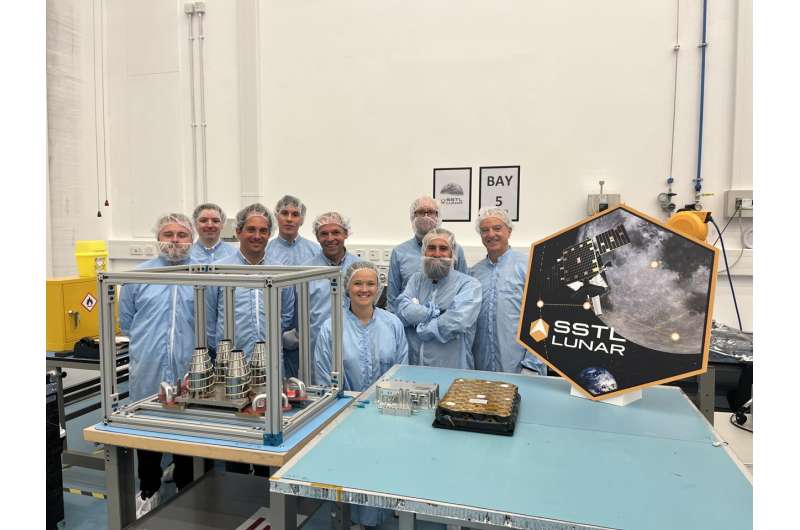ESA is Lunar Pathfinder's anchor customer, while NASA will also make use of its services in exchange for delivering Lunar Pathfinder to lunar orbit through its Commercial Lunar Payload Services (CLPS) initiative aboard the CS-3 Firefly Blue Ghost 2 mission.
Lily Forward, SSTL systems engineer and Spacecraft Lead for Lunar Pathfinder, comments: "SSTL is thoroughly looking forward to not only being part of this historic joint venture between ESA and NASA but also being part of the first CLPS task order to fund the transfer of both a landing and orbital asset to the moon."
Cyril Botteron, CEO and Co-founder of SpacePNT, says, "This will be for the team the culmination of a long development that we started nearly 10 years ago at Ecole Polytechnique Fédérale de Lausanne (EPFL), with the development of a first proof of concept prototype of a super high sensitivity GNSS receiver suitable for moon missions."
Michele Scotti, Technical Manager at SpacePNT, adds, "This achievement stems from the hard work and dedication of the whole team. It is immensely rewarding to have this once-in-a-lifetime opportunity to pioneer autonomous lunar navigation with our NaviMoon receiver."
Success would mean future moon missions could effectively navigate in cislunar environment– fixing autonomously and in real-time their position, using GNSS, with an accuracy better than 100 m, while foregoing the use of costly ground infrastructure.
"This may become a practical way for lunar missions to autonomously determine their own orbits, and also to perform time reference transfers between Earth and the moon," explains Javier Ventura-Traveset, Moonlight NAV manager leading ESA's Navigation Science Office and coordinating all ESA lunar navigation activities.
"To validate the satnav results, the Lunar Pathfinder spacecraft will also perform concurrent X-band radio and laser ranging during the GNSS experiment windows. This will allow to test and combine three ranging technologies at once—GNSS, radio and laser ranging—which has never before been performed from lunar orbit."
Pietro Giordano, Radio Navigation System Engineer and technical officer in charge of the receiver notes that "by demonstrating critical technologies required for precise lunar navigation, our Navigation Experiment Payload has the potential to revolutionize the way satellites are operated in cislunar space."
A successful formal Delivery Review Board held this week confirmed the payload is ready to be embarked on Lunar Pathfinder.
Provided by European Space Agency



